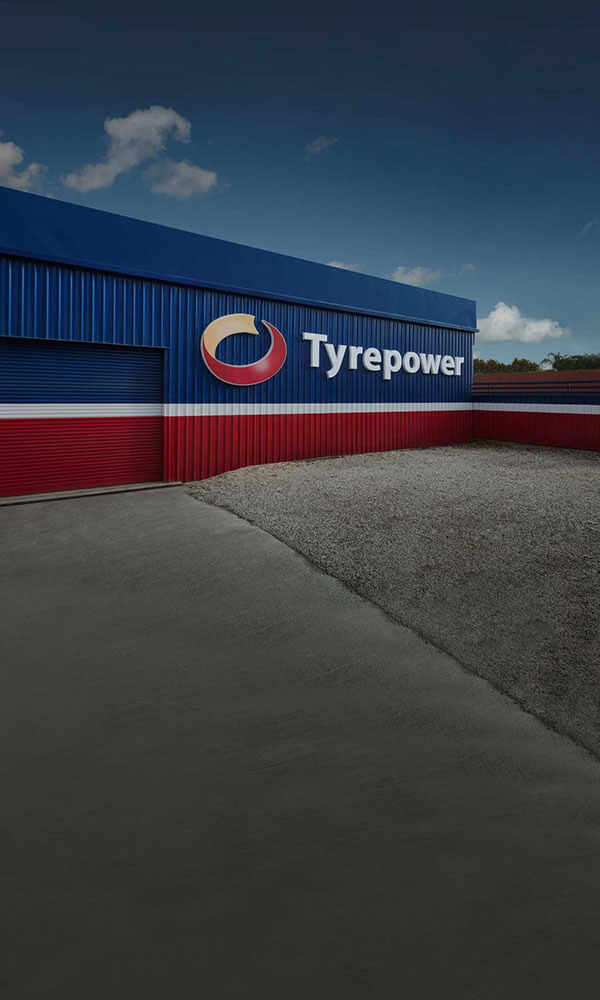Understanding tyre size information with Tyrepower!

Passing a casual glance over any tyre and you’ll likely see a whole bunch of letters, numbers, logos and symbols on the sidewalls. While you don’t have to understand all of them, knowing what a few of them mean will make the process of calling up your local tyre store easier.
Tyres aren’t a one-size-fits-all, and they come in various sizes, patterns, brands and styles, with each being designed to meet specific vehicles and driving requirements.
Keep reading to learn more about the different sizes that tyres come in, as well as how to find out what size tyres you have!
Why Tyres Come in Different Sizes
Vehicles come in a wide variety of sizes, and so tyres must as well. After all, a Toyota Yaris and an F-150 would look pretty awkward if they had the same size wheels and tyres.
The size of a tyre impacts many aspects of your vehicle, including speed, load carrying capacity, traction, handing and fuel economy. So it’s important that you get tyres that both suit your vehicle, and the type of driving that you tend to do.
Smaller tyres are often used where weight and great economy are preferred, where larger tyres might be fitted to SUVs and 4WDs that require more traction and durability.
What Type of Labelling and Writing Can Be Found on Tyre Sidewalls
Tyre sidewalls are full of useful information that even non-car enthusiasts can find useful. The largest markings that you’ll find on the tyre sidewall are usually the tyre brand and model information, followed by tyre size, speed rating and load index. Many tyres also feature the UTQC ratings of Treadwear, Traction and Temperature.
Metric Tyre Size Labels
If you have a passenger vehicle or an SUV, you’ll most likely have tyres with metric size nomenclature. This can be confirmed with an optional ‘P’ designation near the tyre sidewall label for the tyre size.
This is hte most common type of labelling you’ll find on the road, thanks to its use on a vast majority of vehicles. Metric size tyres always follow the same system when it comes to labelling.
- Width: The first three-digit number indicates the tyre’s width in millimetres from sidewall to sidewall. Metric tyre widths are measured in 10mm increments, ending with a 5.
- Aspect Ratio: Following the slash, the two-digit number represents the aspect ratio. The ratio is the percentage of the tyre width that equates to sidewall height. Aka, a 50 profile tyre has a sidewall height equal to half of the tyre width.
- Construction: The letter after the aspect ratio indicates the construction type of the tyre, typically 'R' for Radial.
- Diameter: The final two-digit number gives the diameter of the wheel that the tyre is intended to fit, measured in inches.
To put this into practice, a tyre marked as P225/65R17 means it’s a passenger tyre with a width of 225 mm, an aspect ratio of 65%, radial construction, and fits on a 17-inch wheel.

Light Truck and Flotation Tyre Size Labelling
If you’re into 4WDs, larger SUVs, Light Trucks or commercial vehicles, you’ll be familiar with LT or standard tyre labelling schemes. Often referred to as LT or flotation sizing, these tyres are often designed for vehicles that carry heavier loads or activities that require more durability such as offroad use.
You’ll find LT tyres are labelled with the tyre's width in inches followed by the nominal width and wheel diameter, e.g., 31x10.50R15.
- Diameter: For tyres used in this purpose, the overall diameter is much more important, so is listed first.
- Width: The tyre’s width in inches. This is the width from sidewall to sidewall.
- Diameter: Wheel diameter in inches.
With tyres that use flotation sizes, the aspect ratio is not explicitly stated. When it is included, it usually follows the width and indicates the height of the sidewall as a percentage of the width. If omitted, it’s typically between 65-75% equivalent
To provide an example, if a tyre is marked with numbers such as 31x10.50R15, these can be interpreted as:
- 31 inches for the overall diameter of the tyre,
- 10.50 inches for the tyre's width,
- R indicates a radial construction,
- 15 inches for the wheel diameter that the tyre fits.
Your Local Tyre Experts
Having a basic understanding of the two most common ways of describing tyre size means that you’re armed with the knowledge you need to understand what tyres are on your vehicle, and if you ever need to call up your nearest Tyrepower store, we’ll have all the info to give you speedy and accurate information, regardless of your tyre and wheel query.
At Tyrepower, you’ll find staff who are experts in the tyre and wheel industry and are always ready to help you with your tyre needs. Visit us today to ensure your vehicle is equipped with the best tyres for your driving requirements.

